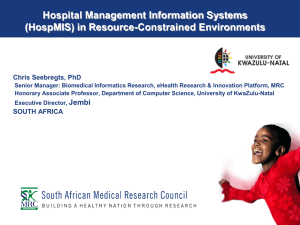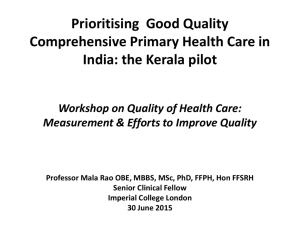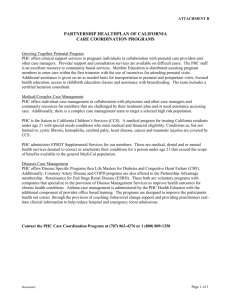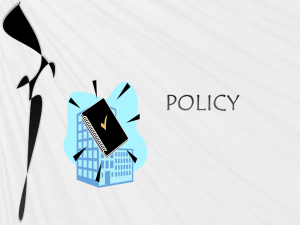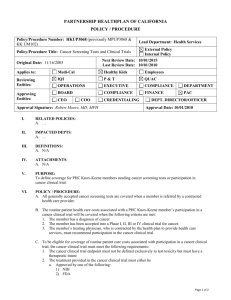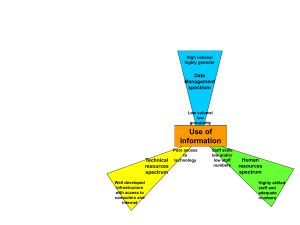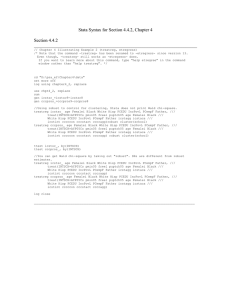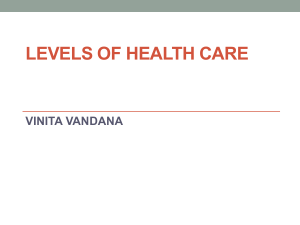Information for action - definition
advertisement
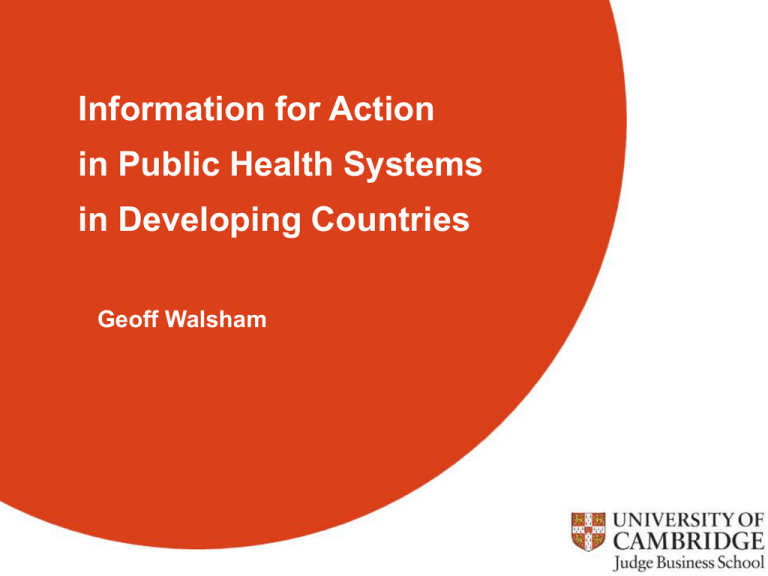
Information for Action Judge Business School in Public Health Systems in Developing Countries Geoff Walsham Page 2 Information for action - definition • The regular and widespread use of information as an input to processes such as planning, management, monitoring and evaluation of health activities and systems with a view to enabling more effective action in the field and improved health outcomes Page 3 Health System Information Flow STATE HEAD QUARTER Data Given State Level Feed Back District TB Department District Malaria Department District Leprosy Department District Level District Blindness Control Program District Head Quarter (DPMU) Others Block MOIC CHC CHC Level PHC Level PHC PHC MOIC Sector Level Health Supervisor Sub-Centre Level ANM ANM Register Information for action – some examples Using information at the national level to develop plans to meet the MDGs Using information at state level to prioritise particular programmes in that state and develop action plans to achieve these Using information at district level to monitor the achievement or underachievement of district health goals and to generate future plans to respond to this Using information at the PHC level to better understand local health problems and issues in order to target resource use more effectively Using information on particular villages and sub-centres to develop ANM activity plans which maximise the use of her capabilities Page 5 Information for action needs good data Accurate Complete Timely Relevant Available where and when needed Page 6 Why is data in public health systems often poor quality? Misreporting due to unintended mistakes, arithmetic calculations etc Deliberate misreporting to present a distorted picture of achievements Under-reporting or no reporting due to time pressures, lack of motivation to report or excessive number of forms, data elements etc. Lack of understanding of the importance of data or its role in improving health outcomes – no ‘information culture’ Page 7 What information and communication technologies (ICTs) can do Provide the capability to capture data more effectively at local level e.g. through mobile phones Provide resources for the processing of data more quickly and accurately Provide capabilities for the generation and display of information in a user-friendly and adaptable way Provide the capability to integrate information across all levels of analysis from the global to the local Page 8 What ICTs cannot do Produce motivated and knowledgeable health workers at all levels Produce an information culture which places high value on the use of information for action Eliminate ‘perverse incentives’ in the health system to misrepresent data or distort information Provide the levels of resources and long-term commitment needed to raise the quality of health care to widely acceptable levels Page 9 Developing the software – HISP/DHIS Health Information Systems Programme (HISP) started in South Africa in the mid-1990s Provides a computer-based district health information system (DHIS) for health planning and management Approach extended to a range of other countries in Africa and Asia Based on open-source software, the latest version being DHIS2 Page 10 Developing the people Ashas ANMs Medical officers in PHCs Block and district personnel State and central health staff Page 11 Developing the institutional support Health is known globally to operate in vertical silos This is often mirrored in vertical institutions who place less emphasis on horizontal communications Need for a change of culture to one of cooperation, horizontal communication and the development of shared goals This matches the spirit of the original HISP approach Page 12 Conclusions • Health management information systems (HMIS) need to be viewed as only one part of heterogeneous networks composed of people, technology, standards, institutions, processes etc. • Change programmes need to address all of these elements holistically and over extended time periods Page 13 Thank You
